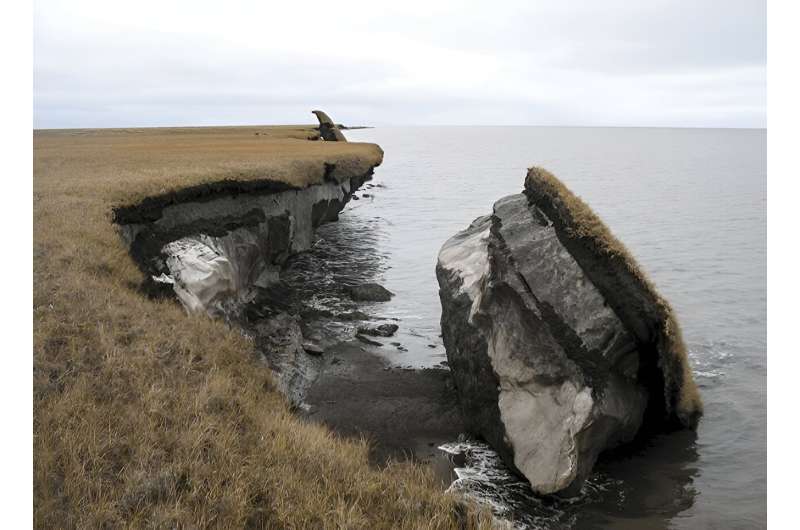This article has been reviewed according to Science X's editorial process and policies. Editors have highlighted the following attributes while ensuring the content's credibility:
fact-checked
trusted source
proofread
Permafrost: A ticking time bomb beneath our feet

Nearly a quarter of the Earth's land surface is permanently frozen. These areas, known as permafrost, are found in northern polar regions and at high altitudes. But the permafrost is now starting to thaw—with potentially disastrous consequences for the climate. Here, we look at what scientists currently know about this potential threat.
Permafrost is a layer of soil, rock or sediment that remains at a temperature of 0°C or below all year round. While it gets little public attention, permafrost nevertheless covers 22% of the Earth's land surface. It's mostly found at northern latitudes—in Greenland, Canada, Alaska and Russia—and at altitudes above the tree line. About 5%–6% of Switzerland is covered by permafrost. We asked Michael Lehning, head of EPFL's Laboratory of Cryospheric Sciences, for his insights on what the thawing permafrost means for our climate.
What are the main risks associated with thawing permafrost?
The main concern is that, in polar regions, permafrost holds vast stores of CO₂ and methane—two powerful greenhouse gases. If these gases were to be released, the implications for the climate would be catastrophic. But that's not all: polar permafrost also contains bacteria and microbes that have been frozen for thousands of years and that could potentially reawaken, as well as large quantities of mercury—although the jury is still out on the exact concentrations and the potential impact.
How much CO₂ and methane could be released?
Polar permafrost consists primarily of marshlands and peat bogs, where the moisture content is high and plant matter decomposes very slowly due to the cold temperatures. This creates the perfect anaerobic conditions for carbon storage. Permafrost is estimated to contain twice as much CO₂ and methane as is currently in the atmosphere. If this large store were to be released, that would significantly speed up global warming.
That said, we don't yet fully understand the dynamics at play, especially when it comes to natural compensation mechanisms. For instance, we know that some of the additional CO₂ would be fixed by new plant growth—but we don't know how much. As things currently stand, we believe that permafrost melt will generally amplify the effects of climate change.
Is it true that permafrost is thawing faster than expected?
Yes. Early climate models predicted that we wouldn't reach the current stage of permafrost melt until 2090! That shows just how hard it is to forecast permafrost dynamics. The margin of uncertainty is much larger than for glaciers, whose changes are more visible. Studying permafrost is really complicated—not just because everything happens deep beneath our feet, but also because of the sheer extent of the Earth's surface it covers. A sample taken in one location tells us nothing about the composition and dynamics of permafrost as a whole.
What threat does this thawing pose to Alpine regions?
When high-altitude permafrost thaws, it can cause the land to become unstable. This is something scientists are monitoring closely in Switzerland. There's a risk to structures such as buildings, pipelines, dams, cable-car stations and power substations, for example.
The good news is that we'd be warned of potential disasters in advance because we'd see signs of cracks forming, for instance. The possibility of catastrophic landslides can't be completely ruled out, but these kinds of events aren't usually triggered by high-altitude permafrost melt, since only the surface layer is permanently frozen in these regions.
The biggest threat comes from land instability coupled with more intense precipitation, as that could lead to more landslides and rock falls, as well as more sediment making its way downstream and silting up river beds. It's a problem that would play out more gradually, but the damage could still be significant.
Provided by Ecole Polytechnique Federale de Lausanne





















